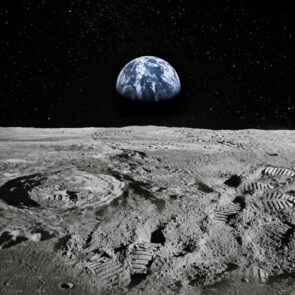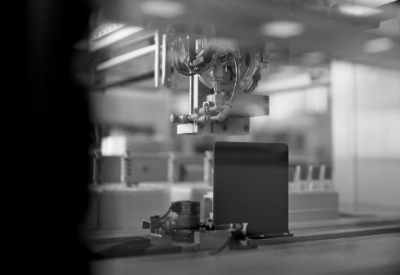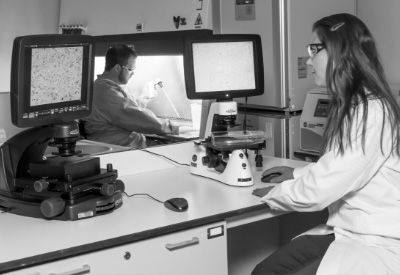The Moon has long captivated humankind as a site of profound intrigue. Despite several decades having gone by without humans setting foot on the lunar surface, new NASA objectives aim to change this, turning the Moon into a permanent outpost for human civilization.
As we stand on the brink of a new era of lunar exploration, it is essential to understand the storied history, complexities, and opportunities that the Moon presents.
Historical Context: The Apollo Missions and Lunar Science
The journey to understanding the Moon began in earnest with NASA’s Apollo missions in the late 1960s and early 1970s. The Apollo program achieved the monumental milestone of landing the first humans on the Moon, starting with the Apollo 11 mission in 1969, which saw U.S. astronauts Neil Armstrong and Buzz Aldrin setting foot on the lunar surface.
The science enabled by the Apollo missions has profoundly impacted our understanding of the Moon. The Apollo astronauts returned with over 800 pounds of lunar rock specimens, including rocks, cores, pebbles, sand, and dust from the lunar surface.
These samples were studied extensively for decades and have provided unique insights into the Moon’s geology, mineral composition, and volcanic activity that otherwise would not have been possible. Analysis of these materials even helped scientists confirm theories about the Moon’s origin, suggesting that the Moon formed from the debris left over after a Mars-sized planetary body collided with Earth billions of years ago.
Moreover, the Apollo missions provided us with detailed geophysical data about the Moon’s surface, gravitational field, and interior structure. This data has been invaluable for subsequent lunar missions and has helped refine our strategies for future planetary exploration efforts.
The New Frontier: Lunar Exploration Initiatives
Now, after decades of relatively limited lunar activities and over 50 years since the last human set foot on the Moon, NASA is reigniting lunar exploration ambitions like never before through the Artemis program. This ambitious program aims to land the first woman and the next man on the Moon by the mid-2020s and establish a sustainable human presence on the lunar surface by the end of the decade.
Artemis I, an uncrewed mission launched in 2022, is designed to test the Orion spacecraft and the Space Launch System (SLS), the most powerful rocket ever built. Following this, Artemis II will carry a crew on a lunar flyby, and Artemis III will see astronauts land on the Moon’s South Pole, an area of particular interest due to potential water ice deposits.
The Artemis program also includes plans for constructing the Gateway, a lunar orbit space station that will serve as a solar-powered communications hub, science laboratory, short-term habitation module, and holding area for rovers and other robots. Thus, this program is about:
- Exploration
- Leveraging the Moon’s resources
- Testing new technologies, systems, and materials that could enable future deep-space missions to even more distant planetary bodies like Mars
Powering Technology in Extreme Conditions

One of the most significant challenges associated with lunar exploration is the Moon’s harsh environment, especially its extremely cold temperatures, which can plummet to nearly -250 ºC in the shadowed regions located in the South Pole. These temperatures pose a formidable challenge to traditional electronic equipment like rovers, landers, and other devices, which struggle to operate effectively under such extreme conditions.
The far side of the Moon, often referred to as the “dark side,” remains one of the most mysterious areas of the lunar surface. Unlike the near side, which is tidally locked to always face the Earth, the far side remains largely unexplored, with prior spacecraft noting unique terrain and geological features.
Even more intriguing are the Moon’s permanently shadowed regions (PSRs), primarily located at the lunar South Pole, where sunlight never reaches. This absence of sunlight further limits exploration options by preventing the operation of any devices that rely on solar energy.
Water Ice on the Moon: What We Know and Why We Need to Know More
Recent missions and observational studies have confirmed the presence of water ice in PSRs, suggesting a potentially abundant resource that could revolutionize space exploration by providing a local supply of water and oxygen—vital resources for both drinking water and fuel. However, the exact quantity, distribution, and accessibility of this ice remain largely unknown. Understanding these factors is not just a matter of scientific curiosity but a critical step in planning for long-term human colonization and utilization of the Moon as a stepping-stone for deeper space exploration.
City Labs’ Role in Lunar Exploration
City Labs has recently assumed an important role in NASA’s lunar science objectives, including being selected for a NASA Innovative Advanced Concepts award. This award focuses on the development of nuclear-micropowered probes (NMPs), leveraging tritium batteries’ unique capabilities to operate autonomously in the extreme cold and darkness of the lunar poles. These probes are designed to be small, cost-effective, and capable of extensive surface mapping and exploration, powering low-power devices that provide vital data on the Moon’s topography, resources, and environmental conditions.
City Labs was chosen for this crucial task due to its expertise in state-of-the-art nuclear battery technology. This technology supports NASA’s scientific and human exploration objectives and represents a significant innovation in powering devices in extreme environments like outer space, whose environmental conditions prevent other power sources from normal operation. The deployment of these probes will facilitate in-situ analyses and help characterize the abundance and location of lunar volatiles—like water on the Moon—supporting NASA’s goals for a permanent human presence on the Moon.
Powering the Future of Lunar Science
Like the Apollo program before it, the Artemis mission will undoubtedly break new barriers in scientific discovery, yielding breakthroughs that benefit not only the future of space exploration but also technological advances that enhance our daily lives.
City Labs is honored to play a part in this quest to better understand our cosmos and is committed to continuously developing nuclear technology innovations like our NanoTritium™ batteries for the betterment of humanity. We are already collaborating with global experts in the aerospace field and are always open to future opportunities to design the next big breakthrough in low-power nuclear energy.
If you are interested in joining this effort, we invite you to contact us today.









